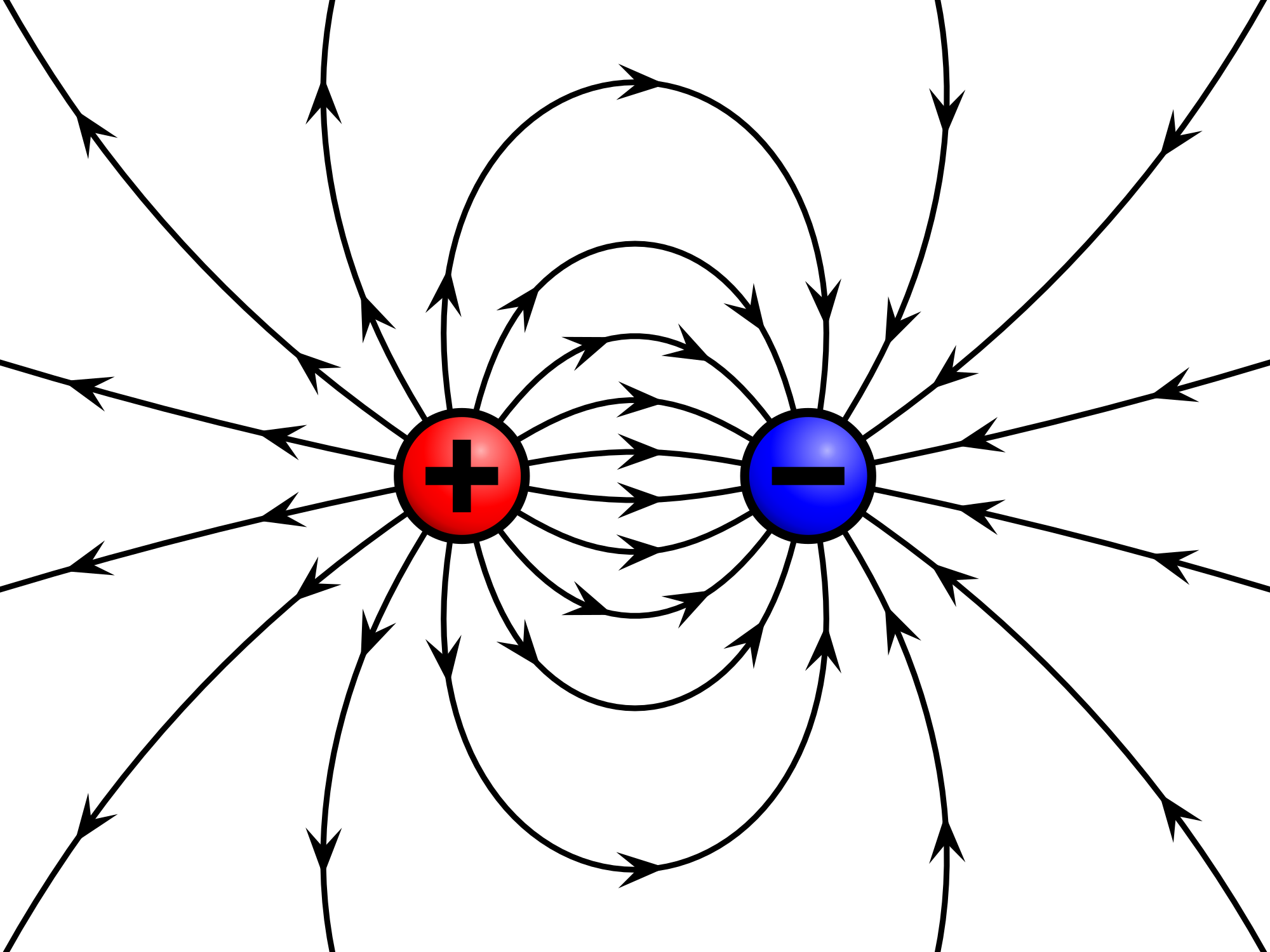Did you know that there are many interesting patterns that can be formed with the study of Electrical Field Lines? Well, you surely did not learn this in your geometry class, which is why you need to study the concept of Electric Field Lines to completely understand what it is all about. Let us take a look at the concept.
Suggested Videos
Electric Field Lines

An electric field can be used in the pictorial form to describe the overall intensity of the field around it. This pictorial representation is called the electric field lines. There are certain properties, rules, and applications of electric field lines. Electric Field Lines can be easily defined as a curve which shows the direction of an electric field when we draw a tangent at its point.
The concept of electric field was first proposed by Michael Faraday, in the 19th century. Faraday always thought of electric field lines as ones which can be used to describe and interpret the invisible electric field. Instead of using complex vector diagram each time, electric field lines can be used to describe the electric field around a system of charges in an easier way.
The strength of electric fields is usually directly proportional to the lengths of electric field lines. Also, since the electric field is inversely proportional to the square of the distance, the electric field strength decreases, as we move away from the charge. The direction of arrows of field lines depicts the direction of the electric field, which is pointing outwards in case of positive charge and pointing inwards in case of a negative charge.
Further, the magnitude of an electric field is well described by the density of charges. The lines closer to the charge represent a strong electric field and the lines away from charge correspond to the weak electric field. This is because the strength of the electric field decreases as we move away from the charge.
Browse more Topics under Electric Charges And Fields
- Conductors and Insulators
- Electric Charge
- Basic Properties of Electric Charge
- Coulomb’s Law
- Electric Field
- Gauss’s Law
- Applications of Gauss’s Law
- Electric Flux
- Electric Dipole
- Dipole in a Uniform External Field
Download Conductors and Insulators Cheat Sheet PDF
Properties of Electric Field Lines
Electric field lines generally show the properties to account for nature of electric fields. Some general properties of these lines are as follows:
- Electric field lines start from a positive charge and end at a negative charge, in case of a single charge, electric field lines end at infinity
- In a charge-free region, electric field lines are continuous and smooth
- Two electric field lines never intersect or cross each other, as if they do, there will be two vectors depicting two directions of the same electric field, which is not possible
- These lines never form a closed loop. This is because an electric field is conservative in nature and hence the lines don’t form a closed loop
Solved Examples for You
Question: Calculate at what distance from a negative charge of 5.536 nC would the
electric field strength be equal to 1.90 x 105 N/C?
Solution: d = ?
q = 5.536 nC
E = 1.90 x 105 N/C
K = 9.0 x 10 9 N . m 2/C 2
The symbols nC stand for nano Coulombs. It is using the metric prefix “n”. We know that
E = Kq / d2
Substituting the values in the given formula we get, d = 1.6 cm. Hence the electric field strength will be equal to 1.90 x 105 N/C at a distance of 1.6 cm








Leave a Reply